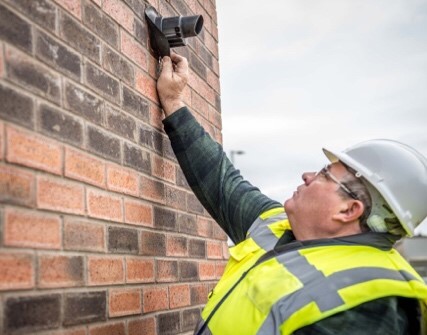The role of a Building Inspector
A day in the life of a Building Quality Site Inspector
A day in the life of a Building Quality Site Inspector
Quality Site Inspectors, also known as Clerks of Works are an essential part of the construction team. They inspect and report on all areas of construction to help maintain quality standards, identify costly defects, delays and reduce risk. They remain independent in their inspections but work closely with the team to ensure the project is built well and to specifications. Clerks of Works duties can vary depending on the project, level of visitations and the individual client specifications.
We asked one of our long-term Building Quality Site Inspectors Bill, to describe his typical day on site.

Tell us about a typical day on site for you?
My working day starts before I reach the site. I normally start the day thinking about the previous day’s events and planning the tasks ahead, this helps me organise and be proactive with my duties ahead of me that day.
After signing in on site, I look at my diary and note the weather conditions, I then prepare my paperwork making sure I have the correct information for my site inspections. I take notes and photographs of workmanship and materials which helps to advise the client on the current performance on site.
A good working relationship with site operatives is imperative, I believe there is great skill in this as site operatives should feel that we support them in helping to make sure they do not have to construct things twice or replace work 12 months down the road at the defects liability period.
What are the most challenging aspects of your role?
One of the biggest challenges is breaking down barriers with contractors and having them gain our trust. Once this is achieved they can see we’re not ‘the enemy’ but are in fact there to help them build a quality building as part of a pro-active site team.
How do you ensure that you add value?
The smallest things can sometimes cause the biggest problems. Some builders have a tendency to build quickly and issue a valuation for payment. Usually this doesn’t link with their quality plan. It’s rare to sign-off as completed properly but those discrepancies/defects left can cause major problems. A ‘keen eye’ aids robust inspections which help ensure everything has been done properly. This will save time and money in the long run. Some of these small things can take months if not years to become evident and can cost everyone a lot of time and money to put right.
What types of defects do you encounter?
Supports for the steel reinforcement is often done using the wrong materials. This is likely to cause structural damage to the ground beams and floor slab if the necessary cover to the steelwork is insufficient.
Fire stopping is always a problem with operatives not fully understanding the fire strategy. Fire stopping is either incomplete or poorly installed on projects.
Kitchen worktops are nearly always finished unsealed or poorly sealed at the cut-outs for sink units and this causes the worktop to expand with water ingress and the whole worktop will then need to be replaced. Replacements get expensive as plumbing, electricity, and gas can be involved in subsequent reconnections.
Wall ties are still a serious issue and careful inspections are necessary to ensure they are correctly installed at the correct spacings – otherwise walls can become unstable.
How do you know when an item of work is up to standard?
This is achieved in several ways and is set by the client’s required standards itemised in the contractual documents, usually drawing and specifications.
An ideal and practical way to agree what these written standards are is to have a sample panel of a wall built including a window or a secure container can be fitted out with a bathroom, kitchen etc. These can then be used as the standard once approved by the client and the design team.
Reviewing drawings etc is also an important part of this service. For instance, a client may ask for a gas boiler to be located away from a bedroom and within a cupboard. A gas pipe, water pipe and electrical connections will be needed, but often the condensate pipe or say the carbon monoxide detector may not be relocated alongside the boiler and relabelling of circuitry might get missed.
On one occasion recently, I saw an area where ‘cold bridging’ hadn’t been designed out and if left would most likely have caused years of problems with damp. After a friendly and positive discussion with the designer, the drawings were reviewed and updated to eradicate the issue. This proactive positive approach adds value by saving time and the need for rectification work sometime later.
What do you enjoy most about your role?
I like that I make a difference to how well the building is being built. I have years of knowledge and experience under my belt and it’s good to be able to pass a bit of that onto the younger operatives on site, so they can then make a difference to the quality of projects they are on. It’s a good feeling knowing that you have worked on the buildings in your city and surrounding areas, and especially when they win awards it makes me feel very proud of what I do and have achieved.
As a leading Clerks of Works consultancy, we employ over 90 Building, M&E and Landscaping Clerks of Works across our Barnsley, Bristol, Edinburgh and London offices. To view some of the projects that our Quality Site Inspectors have worked on, please click here and you can also read about the day in the life of our M&E Quality Site Inspector (M&E Clerk of Works) here.





